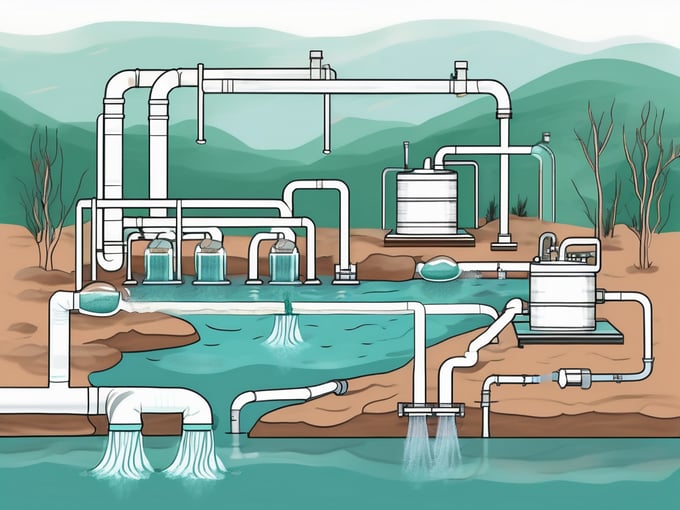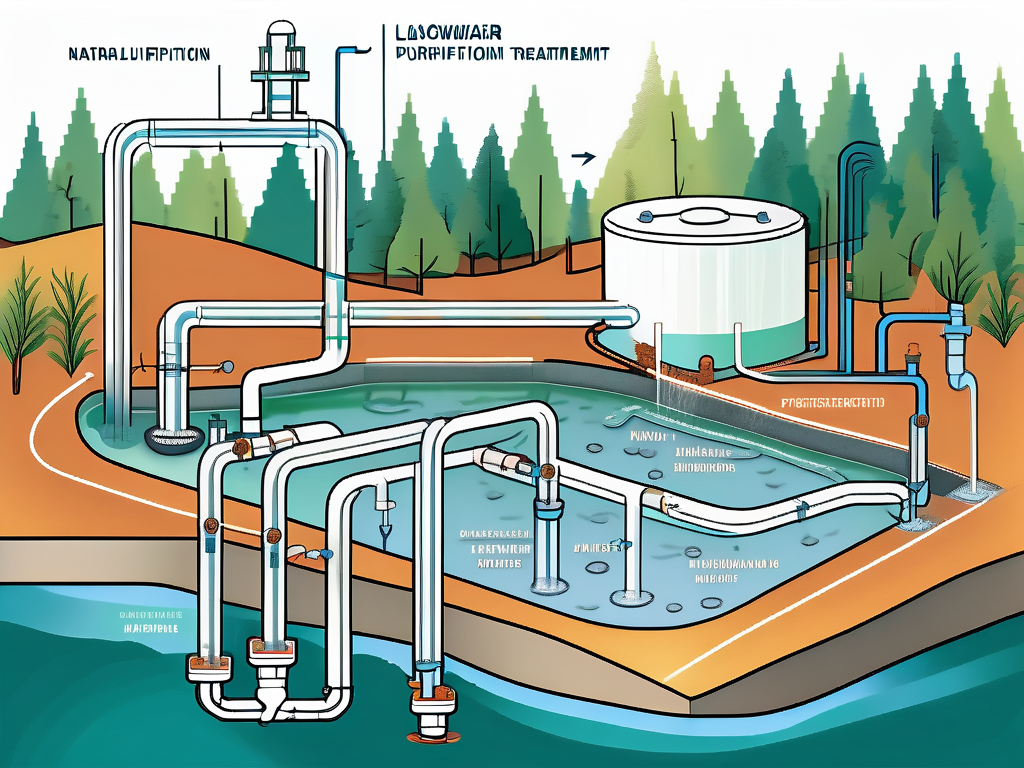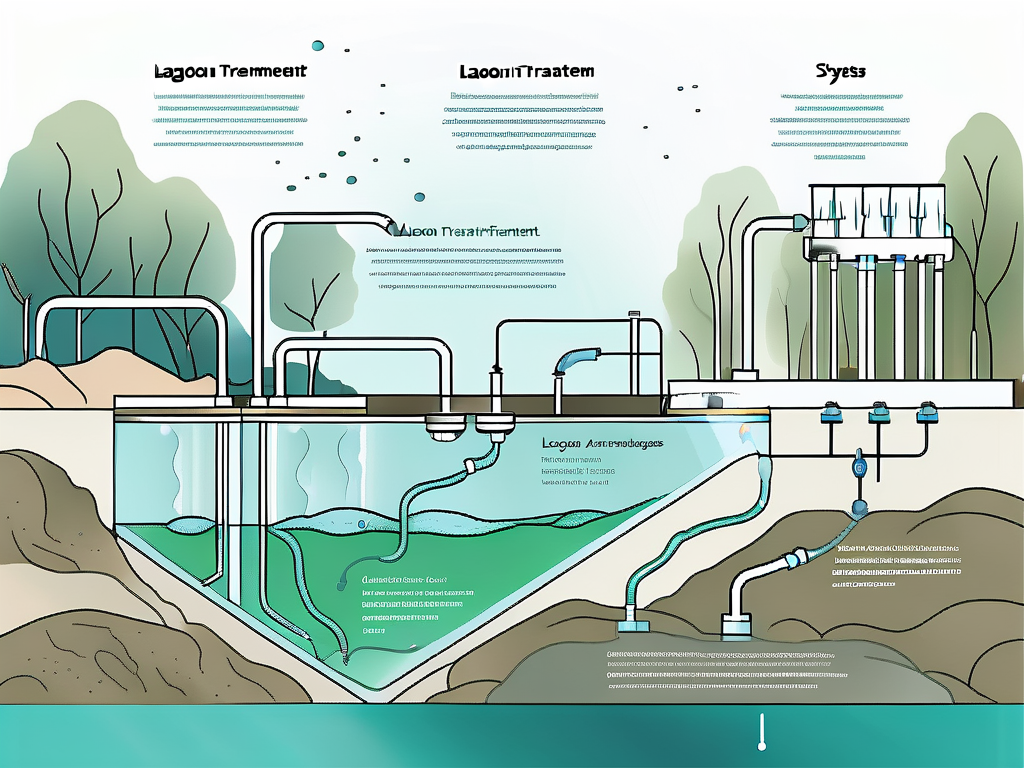
Lagoon Treatment System: Wastewater Treatment Explained
The lagoon treatment system is a crucial component in the process of wastewater treatment. This system, often used in rural and semi-urban areas, utilizes natural processes to treat wastewater, making it safe for release into the environment. This article will delve into the intricacies of the lagoon treatment system, its operation, advantages, disadvantages, and its role in the broader context of wastewater treatment.
Wastewater treatment is a vital process in maintaining environmental health and human safety. It involves the removal of contaminants from wastewater to produce an effluent that can be returned to the water cycle with minimal environmental impact. The lagoon treatment system is one of the methods employed in this process, and this article will provide a comprehensive understanding of its workings.
Understanding Wastewater
Before delving into the specifics of the lagoon treatment system, it is essential to understand what wastewater is. Wastewater is any water that has been adversely affected in quality by anthropogenic influence. It includes substances such as human waste, oil, soap, and food scraps from homes, businesses, and industries.
Wastewater also includes runoff from roads and urban areas, which can contain pollutants such as oil, heavy metals, and chemicals. The treatment of wastewater is essential to prevent these contaminants from entering our waterways and causing harm to aquatic life and human health.
Types of Wastewater
There are three main types of wastewater: blackwater, greywater, and stormwater. Blackwater is wastewater from toilets, which contains fecal matter and urine. It is highly contaminated and requires significant treatment before it can be safely discharged into the environment.
Greywater is wastewater from showers, baths, sinks, washing machines, and dishwashers. While less contaminated than blackwater, greywater still contains pollutants that need to be removed. Stormwater is water from rain or melted snow that runs off streets, lawns, and other sites. It can contain a variety of pollutants, including sediment, nutrients, bacteria, heavy metals, and oils.
Lagoon Treatment System: An Overview
The lagoon treatment system is a type of wastewater treatment process that utilizes natural and man-made processes to treat wastewater. It is often used in rural areas where the population density is low, and the availability of large land areas for the construction of lagoons is high.
Lagoon treatment systems are relatively simple in design and operation. They consist of shallow ponds or lagoons in which wastewater is stored and treated. The treatment process involves physical, biological, and chemical processes that work together to remove contaminants from the wastewater.
Types of Lagoon Treatment Systems
There are three main types of lagoon treatment systems: facultative lagoons, anaerobic lagoons, and aerated lagoons. Facultative lagoons are shallow ponds that allow for both aerobic (with oxygen) and anaerobic (without oxygen) processes to occur. They are typically used for the treatment of domestic wastewater.
Anaerobic lagoons are deeper ponds that promote anaerobic processes. They are commonly used for the treatment of high-strength industrial wastewater. Aerated lagoons are similar to facultative lagoons but have mechanical aeration to increase the oxygen supply and promote aerobic processes.
Operation of the Lagoon Treatment System
The operation of a lagoon treatment system involves several stages, including inflow, treatment, and outflow. In the inflow stage, wastewater enters the lagoon through an inlet pipe. The wastewater is then stored in the lagoon, where treatment processes occur. Finally, the treated wastewater is discharged from the lagoon through an outlet pipe.

The treatment process in a lagoon involves several mechanisms. Physical processes include sedimentation, where solid particles settle at the bottom of the lagoon, and sunlight disinfection, where ultraviolet light from the sun kills pathogens. Biological processes involve bacteria and algae that break down organic matter in the wastewater. Chemical processes include neutralization, where harmful chemicals are converted into less harmful forms.
Role of Microorganisms
Microorganisms play a crucial role in the treatment process in lagoon systems. Bacteria and algae are the primary microorganisms involved. Bacteria break down organic matter in the wastewater, converting it into simpler substances. Algae produce oxygen through photosynthesis, which is used by aerobic bacteria for their metabolic processes.
These microorganisms form a symbiotic relationship, with bacteria providing nutrients for the algae, and the algae providing oxygen for the bacteria. This relationship is crucial for the effective operation of the lagoon treatment system.
Advantages and Disadvantages of Lagoon Treatment Systems
Lagoon treatment systems offer several advantages. They are relatively simple to design and operate, making them suitable for rural areas with limited resources. They also utilize natural processes, reducing the need for chemicals and energy. Furthermore, lagoons provide a habitat for wildlife, contributing to local biodiversity.

However, lagoon treatment systems also have some disadvantages. They require large land areas, which may not be available in densely populated areas. The treatment process is also slower compared to other methods, and the effluent quality may not meet the standards required for certain uses. Additionally, lagoons can produce odors and attract insects, causing nuisance to nearby residents.
Improving Lagoon Treatment Systems
Despite their disadvantages, lagoon treatment systems can be improved in several ways. One method is through the addition of aeration equipment, which increases the oxygen supply and speeds up the treatment process. Another method is through the use of covers to control odors and prevent the attraction of insects.
Furthermore, the effluent quality can be improved through additional treatment processes, such as filtration and disinfection. These improvements can make lagoon treatment systems a viable option for wastewater treatment in a wider range of settings.
Role of Lagoon Treatment Systems in Wastewater Treatment
Lagoon treatment systems play a crucial role in wastewater treatment, especially in rural areas. They provide a cost-effective and environmentally friendly method of treating wastewater, contributing to the protection of water resources and public health.
Despite their limitations, lagoon treatment systems can be an effective part of a comprehensive wastewater treatment strategy. With improvements in design and operation, they can provide a high level of treatment and meet the needs of a variety of settings.
Future of Lagoon Treatment Systems
The future of lagoon treatment systems is promising. With advancements in technology and a growing emphasis on sustainable practices, lagoon treatment systems are likely to become even more efficient and widely used. Research is ongoing to improve the design and operation of lagoons, and to integrate them with other treatment methods for a more holistic approach to wastewater treatment.
In conclusion, the lagoon treatment system is a vital part of wastewater treatment. It offers a simple, cost-effective, and environmentally friendly method of treating wastewater, making it an important tool in the protection of our water resources and public health.



